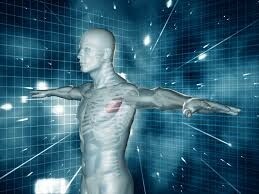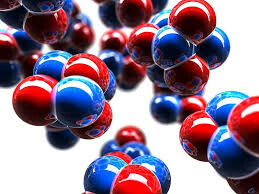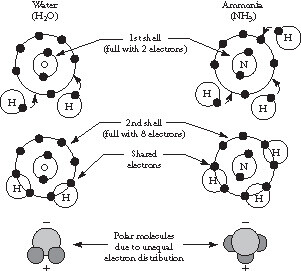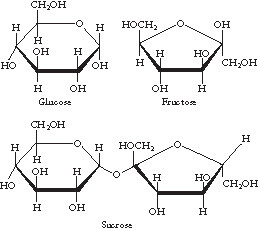Biology, Karl Irvin Baguio [the speed reading book txt] 📗

- Author: Karl Irvin Baguio
Book online «Biology, Karl Irvin Baguio [the speed reading book txt] 📗». Author Karl Irvin Baguio
Introduction to Biology
Biology is the study of living things. It encompasses the cellular basis of living things, the energy metabolism that underlies the activities of life, and the genetic basis for inheritance in organisms. Biology also includes the study of evolutionary relationships among organisms and the diversity of life on Earth. It considers the biology of microorganisms, plants, and animals, for example, and it brings together the structural and functional relationships that underlie their day-to-day activities. Biology draws on the sciences of chemistry and physics for its foundations and applies the laws of these disciplines to living things.
Many subdisciplines and special areas of biology exist, which can be conveniently divided into practical and theoretical categories. Types of practical biology include plant breeding, wildlife management, medical science, and crop production. Theoretical biology encompasses such disciplines as physiology (the study of the function of living things), biochemistry (the study of the chemistry of organisms), taxonomy (classification), ecology (the study of populations and their interactions with each other and their environments), and microbiology (the study of microscopic organisms).

Characteristics of Living Things
Defining a living thing is a difficult proposition, as is defining “life”—that property possessed by living things. However, a living thing possesses certain properties that help define what life is.
Complex organization
Living things have a level of complexity and organization not found in lifeless objects. At its most fundamental level, a living thing is composed of one or more cells. These units, generally too small to be seen with the naked eye, are organized into tissues. A tissue is a series of cells that accomplish a shared function. Tissues, in turn, form organs, such as the stomach and kidney. A number of organs working together compose an organ system. An organism is a complex series of various organ systems.
Metabolism
Living things exhibit a rapid turnover of chemical materials, which is referred to as metabolism. Metabolism involves exchanges of chemical matter with the external environment and extensive transformations of organic matter within the cells of a living organism. Metabolism generally involves the release or use of chemical energy. Nonliving things do not display metabolism.
Responsiveness
All living things are able to respond to stimuli in the external environment. For example, living things respond to changes in light, heat, sound, and chemical and mechanical contact. To detect stimuli, organisms have means for receiving information, such as eyes, ears, and taste buds.
To respond effectively to changes in the environment, an organism must coordinate its responses. A system of nerves and a number of chemical regulators called hormones coordinate activities within an organism. The organism responds to the stimuli by means of a number of effectors, such as muscles and glands. Energy is generally used in the process.
Organisms change their behavior in response to changes in the surrounding environment. For example, an organism may move in response to its environment. Responses such as this occur in definite patterns and make up the behavior of an organism. The behavior is active, not passive; an animal responding to a stimulus is different from a stone rolling down a hill. Living things display responsiveness; nonliving things do not.
Growth
Growth requires an organism to take in material from the environment and organize the material into its own structures. To accomplish growth, an organism expends some of the energy it acquires during metabolism. An organism has a pattern for accomplishing the building of growth structures.
During growth, a living organism transforms material that is unlike itself into materials that are like it. A person, for example, digests a meal of meat and vegetables and transforms the chemical material into more of himself or herself. A nonliving organism does not display this characteristic.
Reproduction
A living thing has the ability to produce copies of itself by the process known as reproduction. These copies are made while the organism is still living. Among plants and simple animals, reproduction is often an extension of the growth process. More complex organisms engage in a type of reproduction called sexual reproduction, in which two parents contribute to the formation of a new individual. During this process, a new combination of traits can be produced.
Asexual reproduction involves only one parent, and the resulting cells are generally identical to the parent cell. For example, bacteria grow and quickly reach maturity, after which they split into two organisms by a process of asexual reproduction called binary fission.
Evolution
Living organisms have the ability to adapt to their environment through the process of evolution. During evolution, changes occur in populations, and the organisms in the population become better able to metabolize, respond, and reproduce. They develop abilities to cope with their environment that their ancestors did not have.
Evolution also results in a greater variety of organisms than existed in previous eras. This proliferation of populations of organisms is unique to living things.
Ecology
The environment influences the living things that it surrounds. Ecology is the study of relationships between organisms and their relationships with their environment. Both biotic factors (living things) and abiotic factors (nonliving things) can alter the environment. Rain and sunlight are non-living components, for example, that greatly influence the environment. Living things may migrate or hibernate if the environment becomes difficult to live in.
Chapter 2: The Chemical Basis of Life
Acids and Bases
Acids are chemical compounds that release hydrogen ions (H+) when placed in water. For example, when hydrogen chloride is placed in water, it releases its hydrogen ions and the solution becomes hydrochloric acid.
Bases are chemical compounds that attract hydrogen atoms when they are placed in water. An example of a base is sodium hydroxide (NaOH). When this substance is placed in water, it attracts hydrogen ions, and a basic (or alkaline) solution results as hydroxyl (–OH) ions accumulate.
Molecules
Most of the compounds of interest to biologists are composed of units called molecules. A molecule is a precise arrangement of atoms held together by chemical bonds, and a compound is a molecule that contains atoms of more than one element. A molecule may be composed of two or more atoms of the same element, as in oxygen gas (O2), or it may be composed of atoms from different elements. The arrangements of the atoms in a molecule account for the properties of a compound. The molecular weight is equal to the atomic weights of the atoms in the molecule.

The atoms in molecules may be joined to one another by various linkages called bonds. One example of a bond is an ionic bond, which is formed when the electrons of one atom transfer to a second atom. This creates electrically charged atoms called ions. The electrical charges cause the ions to be attracted to one another, and the attraction forms the ionic bond.
A second type of linkage is a covalent bond. A covalent bond forms when two atoms share one or more electrons with one another. For example, as shown in Figure 2-1, oxygen shares its electrons with two hydrogen atoms, and the resulting molecule is water (H2O). Nitrogen shares its electrons with three hydrogen atoms, and the resulting molecule is ammonia (NH3). If one pair of electrons is shared, the bond is a single bond; if two pairs are shared, it is a double bond.

Figure 2-1 Formation of a covalent bond in water and ammonia molecules. In each molecule, the second shell fills with eight electrons.
Organic Compounds The chemical compounds of living things are known as organic compounds because of their association with organisms and because they are carbon-containing compounds. Organic compounds, which are the compounds associated with life processes, are the subject matter of organic chemistry. Among the numerous types of organic compounds, four major categories are found in all living things: carbohydrates, lipids, proteins, and nucleic acids.
Carbohydrates
Almost all organisms use carbohydrates as sources of energy. In addition, some carbohydrates serve as structural materials. Carbohydrates are molecules composed of carbon, hydrogen, and oxygen; the ratio of hydrogen atoms to oxygen and carbon atoms is 2:1.
Simple carbohydrates, commonly referred to as sugars, can be monosaccharides if they are composed of single molecules, or disaccharides if they are composed of two molecules. The most important monosaccharide is glucose, a carbohydrate with the molecular formula C6H12O6. Glucose is the basic form of fuel in living things. In multicellular organisms, it is soluble and is transported by body fluids to all cells, where it is metabolized to release its energy. Glucose is the starting material for cellular respiration, and it is the main product of photosynthesis
Three important disaccharides are also found in living things: maltose, sucrose, and lactose. Maltose is a combination of two glucose units covalently linked. The table sugar sucrose is formed by linking glucose to another monosaccharide called fructose. (Figure 2-2 shows that in the synthesis of sucrose, a water molecule is produced. The process is therefore called a dehydration reaction. The reversal of the process is hydrolysis, a process in which the molecule is split and water is added.) Lactose is composed of glucose and galactose units.

Figure 2-2 Glucose and fructose molecules combine to form the disaccharide sucrose.
Complex carbohydrates are known as polysaccharides. Polysaccharides are formed by linking innumerable monosaccharides. Among the most important polysaccharides is starch, which is composed of hundreds or thousands of glucose units linked to one another. Starch serves as a storage form for carbohydrates. Much of the world’s human population satisfies its energy needs with starch in the form of rice, wheat, corn, and potatoes.
Two other important polysaccharides are glycogen and cellulose. Glycogen is also composed of thousands of glucose units, but the units are bonded in a different pattern than in starch. Glycogen is the form in which glucose is stored in the human liver. Cellulose is used primarily as a structural carbohydrate. It is also composed of glucose units, but the units cannot be released from one another except by a few species of organisms. Wood is composed chiefly of cellulose, as are plant cell walls. Cotton fabric and paper are commercial cellulose products.
Lipids
Lipids are organic molecules composed of carbon, hydrogen, and oxygen atoms. The ratio of hydrogen atoms to oxygen atoms is much higher in lipids than in carbohydrates. Lipids include steroids (the material of which many hormones are composed), waxes, and fats.
Fat molecules are composed of a glycerol molecule and one, two, or three molecules of fatty acids (see Figure 2-3). A glycerol molecule contains three hydroxyl (–OH) groups. A fatty acid is a long chain of carbon atoms (from 4 to 24) with a carboxyl (–COOH) group at one end. The fatty acids in a fat may all be alike or they may all be different. They are bound to the glycerol molecule by a process that involves the removal of water.
Certain fatty acids have one or more double bonds in their molecules. Fats that include these molecules are unsaturated fats. Other fatty acids have no double bonds. Fats that include these fatty acids are saturated fats. In most human health situations, the consumption of unsaturated fats is preferred to the consumption of saturated fats.
Fats stored in cells usually form clear oil droplets called globules because fats do not dissolve





Comments (0)